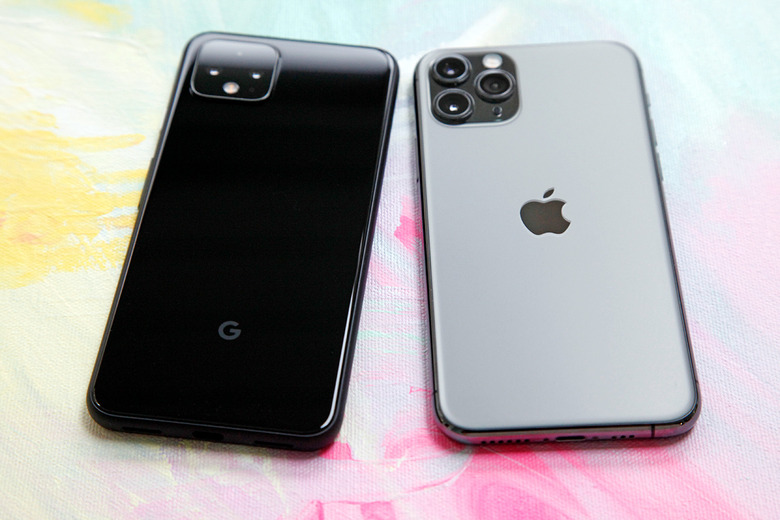Here's One Way That Google's Pixel Crushes The iPhone
- Pixel vs. iPhone: In a viral tweet, someone recorded a video of how much better Google's Pixel is at voice-to-text dictation than Apple's iPhone.
- The voice-to-text email on the Pixel is virtually flawless, while the iPhone email is riddled with errors.
- iPhones might come out on top in performance, but they aren't always the smartest phones.
Technically, the Pixel smartphones are Google's answer to the iPhone. That's not to say that they always target the same market, but Pixel is Google's flagship mobile phone, and a new model launches every year like clockwork. But when it comes to performance, the iPhone is in a league of its own. The Pixel 4 doesn't even come close to matching the single-core or multi-core scores of the iPhone 11 in Geekbench (though, to be fair, not many phones do). And yet, despite the performance disparity, there are areas where the Pixel totally crushes the iPhone.
In a tweet that went viral earlier this week, Bloomberg Beta's James Cham shared a video in which he compares the experience of drafting an email using voice-to-text on two unidentified iPhone and Pixel models. As you will see, the results are almost immediately apparent, and the iPhone doesn't hold a candle to the Pixel:
I don't think that people appreciate how different the voice to text experience on a Pixel is from an iPhone. So here is a little head to head example. The Pixel is so responsive it feels like it is reading my mind! pic.twitter.com/zmxTKxL3LB
— James Cham (@jamescham) May 27, 2020
In addition to being much, much faster on the Pixel, the dictation is far more accurate on the Pixel as well. By the time Cham finishes speaking, there are enough errors on the iPhone email that he might want to consider retyping it from scratch before sending it to anyone. Meanwhile, the email on the Pixel is virtually flawless.
"Speed has its own quality—the current model for speech is like a command line," Cham explains in a follow-up to his first tweet. "You say something and wait for a response. Now that voice to text is fast and uses fewer resources than you would think, there's a chance for truly interactive voice experiences."
There are a number of explanations for the gulf between the quality of voice-to-text transcription between the two devices, including, as 9to5Google points out, the fact that Google lets Pixel owners download the entire English voice model directly to their phone, which allows it to handle real-time dictation just as quickly and as accurately as if it were being sent to Google's servers. Regardless, it still significantly outclasses Apple's solution.
Independent iOS developer Ben Harraway chimed in with a demo of his own, using the on-device speech recognition of the iPhone rather than server recognition. Although the Android phone still comes out on top, the results are much more similar than they were in the original test from Cham:
Sure! Here you go. iOS13 on-device speed versus Google cloud... iOS performs really well in speed but Google is more accurate pic.twitter.com/OQSjIjCtKt
— Ben Harraway (@BenLumenDigital) May 27, 2020
In terms of design and performance, the iPhone has few equals. But there's no doubt that Apple still lags far behind the competition in certain areas, such as voice-to-text dictation and virtual AI functionality.
